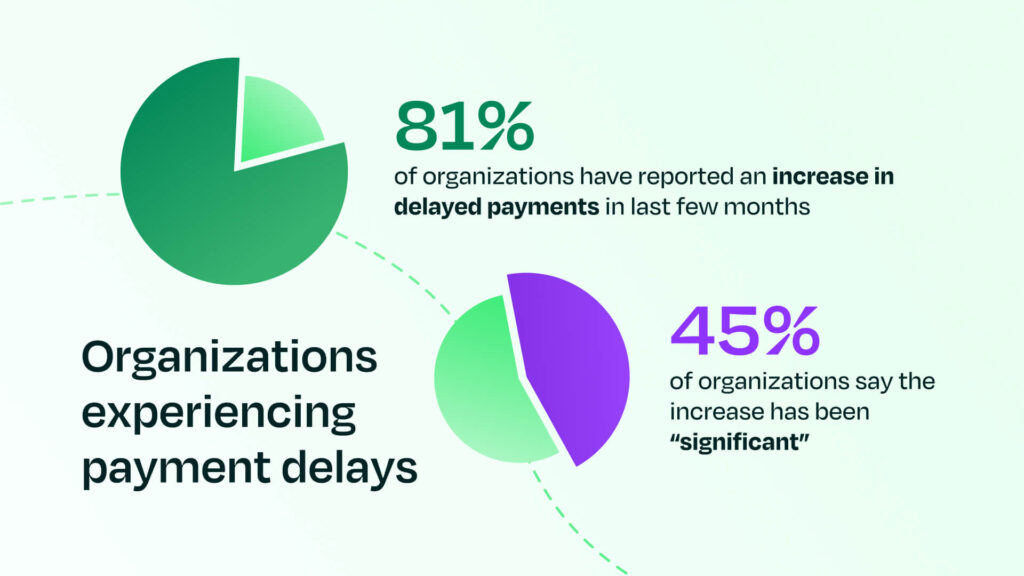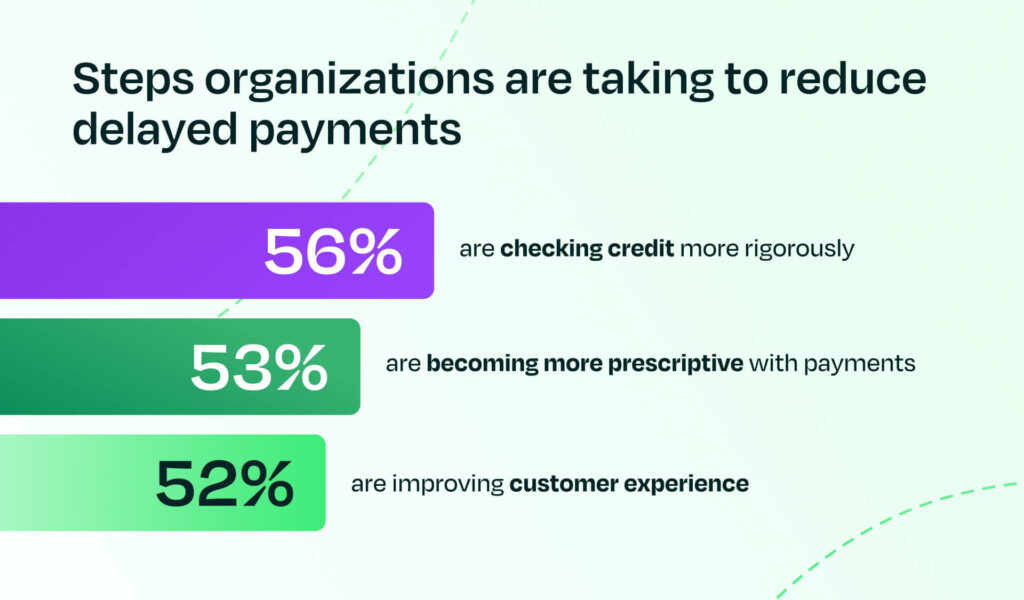The global economy has been rocked by unprecedented disruptions since the start of 2023, causing significant challenges for businesses worldwide. One area that has felt an acute impact is the B2B sector, where organizations across industries are grappling with an influx of delayed payments against a backdrop where predictable cash flow has become both more important and harder to come by.
The reality is that there is much uncertainty ahead, which has led to 82% of business owners saying that they are at least somewhat concerned about the economic outlook and its impact on their businesses over the next 6-12 months.

With this in mind, Billtrust wanted to dig into the source of this worry, as well the extent of the impact that today’s economic environment is having on organizations and the teams tasked with safeguarding their financial health. To do so, the company commissioned a study to more than 300 owners, operators and C-suite level executives in businesses representing the construction, transportation, distribution, wholesale and manufacturing industries.
The following is an overview of key findings from the study that highlight some of the biggest financial challenges these organizations are facing, as well as the increasing significance of a modern accounts receivables (AR) function in navigating the current economic environment and beyond.
Impacts of an uncertain economy on B2Bs
44% of businesses across industries report that they have experienced a slowdown in business since the start of the year, with 26% saying that it has been a significant slowdown. While the remaining 56% of businesses report that business has been steady or even increased, the potential of a recession around the corner could result in many more organizations experiencing losses in revenue and slowdowns in cash flow.
Perhaps a portend of things to come, 81% of organizations have reported an increase in delayed payments over the last few months, with 45% saying the increase has been “significant.” Notably, the manufacturing industry was more likely than others to report a “significant” delay in payments (55%). With businesses across industries experiencing a deluge of challenges from the pandemic, supply chain disruptions and consumer spending shifts, it’s simply becoming more difficult for many businesses to pay their bills on time.

The increased importance of the accounts receivable function
With the increase in delayed payments, it is no surprise that the importance of the accounts receivable function has increased significantly for many businesses. The study revealed that 83% of owners and C-level executives believe that their accounts receivable function has become more important to the overall success of their business over the past few months.
However, despite the increase in importance, only 44% of respondents believe that their accounts receivable team has the necessary tools, resources and skills to succeed in today’s environment, with an additional 30% saying they think their AR team is somewhat prepared but could benefit from additional training, resources, and tools.

Interestingly, this parallels past Billtrust research that found over a quarter (26%) of AR professionals are still stuck using mostly manual processes. Only 7% were all digital, despite digitization’s proven value in helping organizations get paid quicker in turbulent economic times. In an environment where many finance teams are having to do more with less, and facing evolving complexities across the entire order-to-cash cycle, it’s imperative that organizations invest the time and resources for this increasingly important function to do their jobs properly. The good news is that, across the board, organizational leaders have plans to make these investments or already have.
Adopting an innovation first mindset to boost cash flow
Traditionally, the B2B space has been a laggard when it comes to technology adoption. But in today’s digital-first landscape, that’s simply no longer an option. Fortunately, it seems that many organizations are waking up to this reality, as we’ve seen an influx of businesses adopting payment technologies for their accounts receivable function, including e-invoicing and digital/electronic payments.
Our study found that for those who adopted digital payment technologies, 73% saw faster payment processing, and 61% experienced reduced administrative costs. Meanwhile, 32% reported reduced days sales outstanding (DSO), 40% reported improvements in visibility and 41% reported improvements in customer relationships. While the benefits of these technologies may seem obvious, the fact remains that the B2B space – and these verticals in particular – have historically been laggards when it comes to adopting technology.
In fact, this report found that barriers still remain that are preventing some organizations from adopting digital payment technologies. Those surveyed that have not adopted any digital payment technologies say the biggest reason why is because they lack understanding (40%). This was followed by client acceptance (37%), a lack of integration with clients’ technologies (35%) and a lack of support from banking partners (35%).
These are, of course, very fair and real reasons why digitization hasn’t been more widespread in B2B. For AR professionals, in particular, they’ve long been frustrated by an imbalance of power between them and their AP counterparts that has transcended over to the technologies they use. In other words, many accounts payable technologies on the market – like virtual cards – do not currently integrate neatly with ERPs or other AR platforms. This opens up AR professionals to more frustrating and inefficient manual processes on top of their already heavy workloads.
Measuring the success of the accounts receivable (AR) function
The survey revealed that the most common metric used to measure the success of the accounts receivable function was the collection effectiveness index (CEI) (55%). Meanwhile, 48% of respondents measured success through customer satisfaction, and 45% measured success through the cost of collection.
As highlighted in a recent survey of current and future CFOs by Billtrust, however, organizations are starting to look beyond the numbers to measure the success of their finance functions. Billtrust’s past research most notably found that organizations are increasingly tracking customer satisfaction and the customer experience as markers of success. Fast forward to the company’s C-Suite Economic Outlook, and B2B executives have again spotlighted the customer experience as being key to accelerating cash flow.
In fact, when respondents were asked what steps they’re taking to reduce the risk of delayed payments, 52% said they were improving the customer experience. This was almost on par with those that said they were becoming more prescriptive with customer payments (53%) and checking credit more rigorously (56%).
What this all means
The economic environment has clearly impacted B2B businesses across the board, with a significant number of companies reporting a business slowdown and an increase in delayed payments. This has had a domino effect, forcing some businesses to turn to technology in order to adapt to the current situation.
The increased urgency of a modern accounts receivable function is becoming more apparent as companies are starting to recognize the importance of having the right tools, resources, and skills to succeed in today’s environment. A majority of respondents believed that their AR team was equipped with the necessary tools and resources, but there was still room for improvement in terms of additional training and tools.
Adopting digital payment technologies, such as e-invoicing and electronic payment systems, has become a popular solution for many companies. This has resulted in faster payment processing, reduced administrative costs, and improved visibility into AR performance. However, there are still barriers preventing some companies from adopting digital payment technologies, such as lack of understanding, client acceptance, and lack of integration with clients’ technologies.
Companies that invest in their AR function, adopt digital payment technologies, and take steps to reduce the risk of delayed payments will be better equipped to succeed in today’s economic environment.









